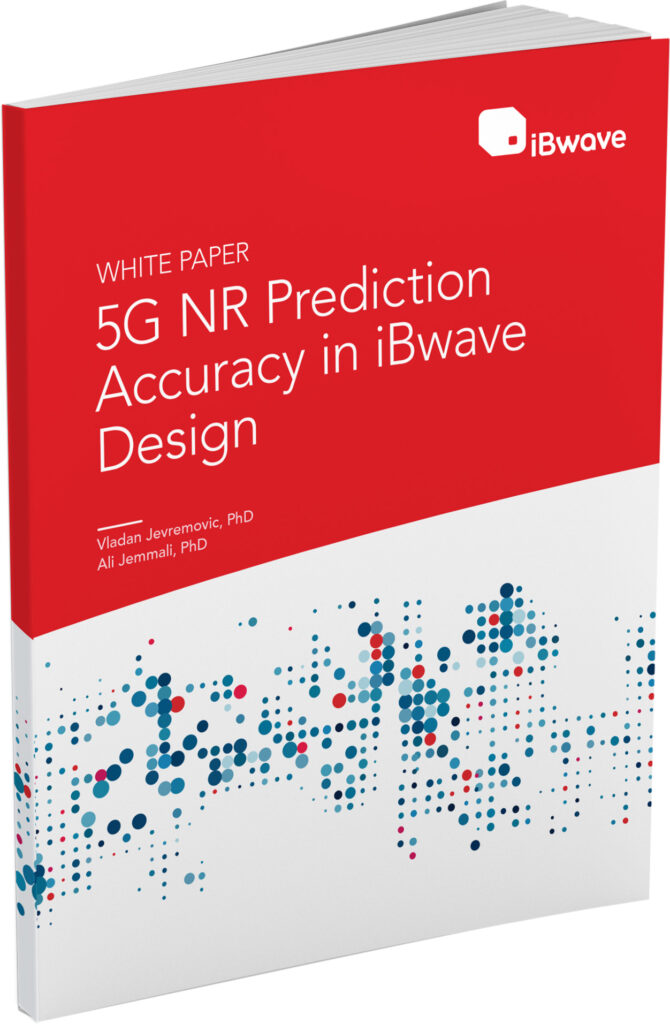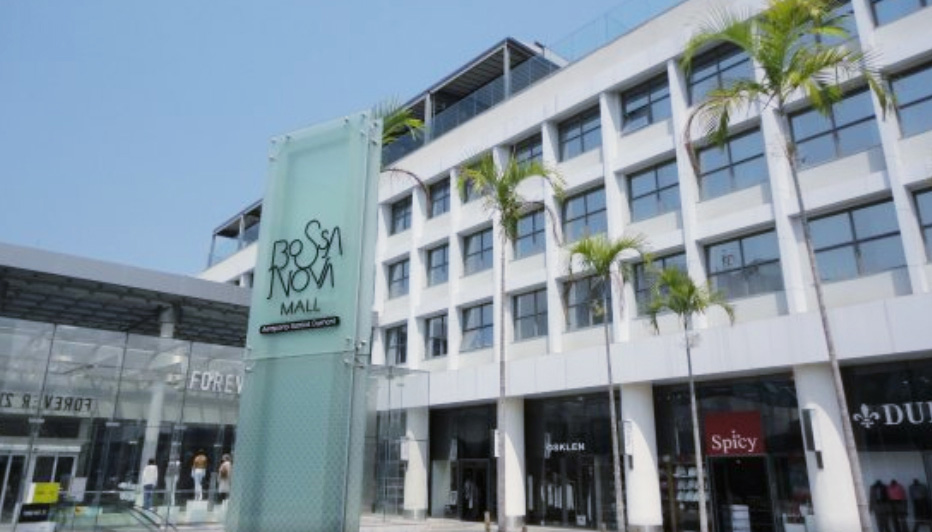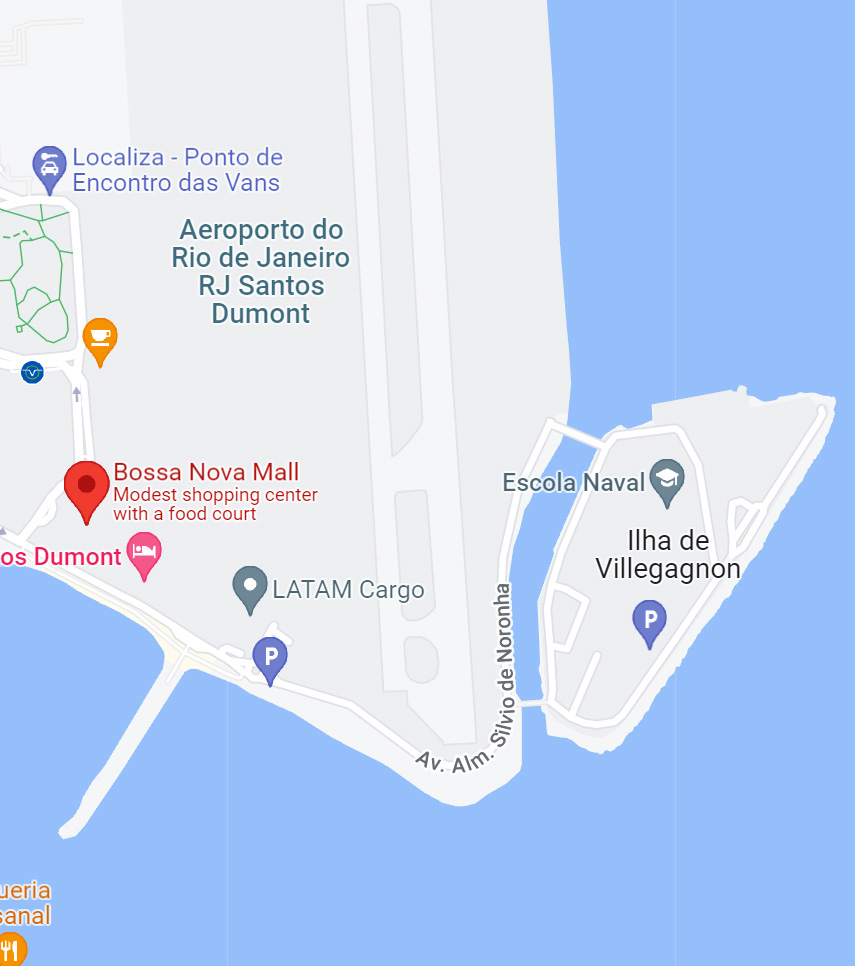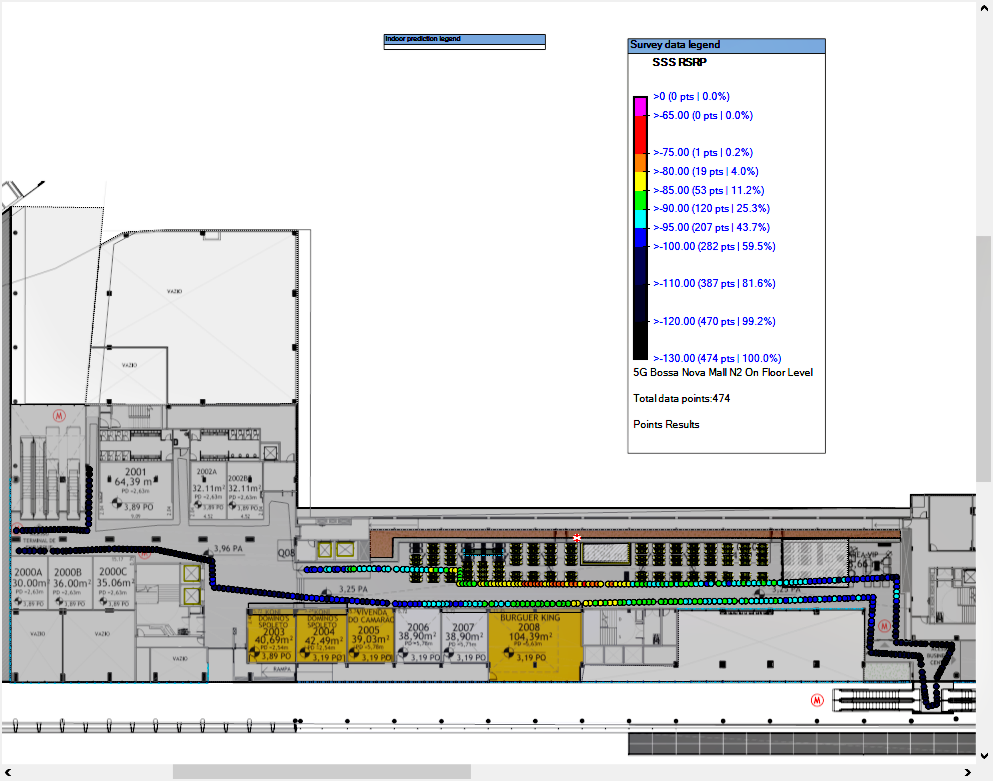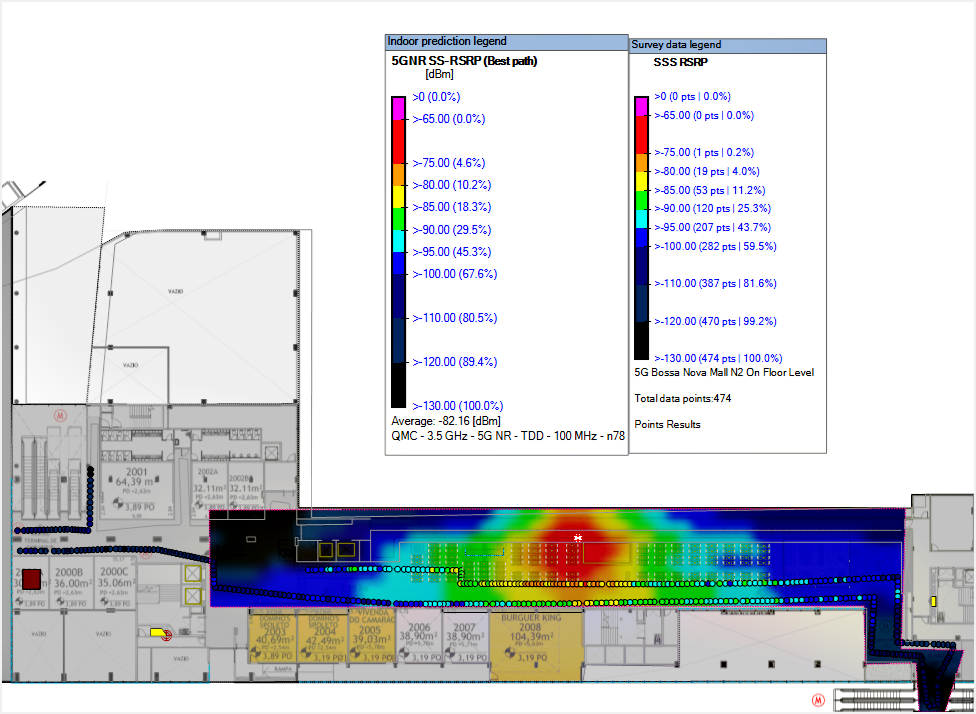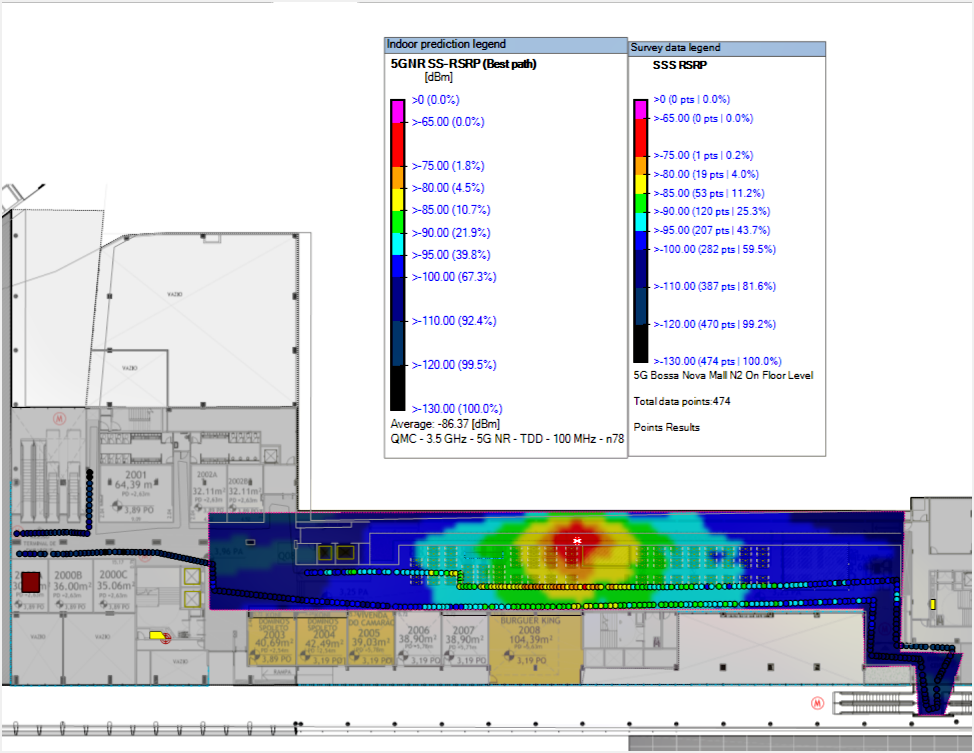5G NR Prediction Accuracy in iBwave Design
by Vladan Jevremovic, PhD
and Ali Jemmali, PhD
Document Scope
QMC Telecom International, a leading owner, developer, and operator of indoor DAS systems in Latin America with over 142 million square feet of coverage deployed and an experienced in-house engineering team who has implemented more than 10,000 DAS sites globally, has recently had a trial of 5G NR network in Brazil. The trial was at Bossa Nova Mall, which is a part of a hotel/mall complex attached to Santos Dumont Airport in Rio de Janeiro. Planning and design of the trial network was done using iBwave Design. Post-installation. QMC Telecom completed RF survey of 5G NR coverage, and the results were shared with iBwave Solutions. This white paper describes the venue, technical details of the trial network implementation, compares the predicted and measured 5G NR coverage, and presents statistical analysis of the prediction error.
Venue Description
The same area shown on the map of RJ Santos Dumont airport and its surroundings.
The mall has a covered area of 1,500 square meters (16,000 square feet), and 5 million annual visitors.
The venue has existing 3G and LTE DAS network, covering all 7 levels.
5G NR Trial Network
The trial network transmitted 5G NR signal on 100 MHz channel at 3.5 GHz. It had five 5G NR irradiation points installed on Street and Mezzanine level. They are shown below as orange circles. The existing 3G/LTE DAS antennas are shown as checkered black/white pattern circles.
Street Level
5G NR irradiation point at mall Uber lounge.
Hotel Lobby
5G NR irradiation point at hotel lobby.
Mezzanine Level
Three 5G NR irradiation points at food court.
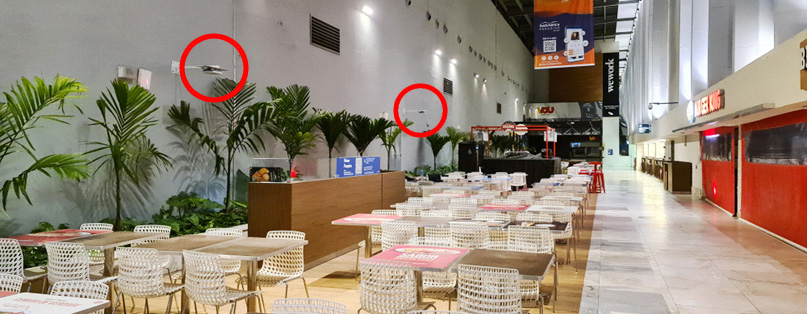
5G irradiation points at food court, marked in red circles.
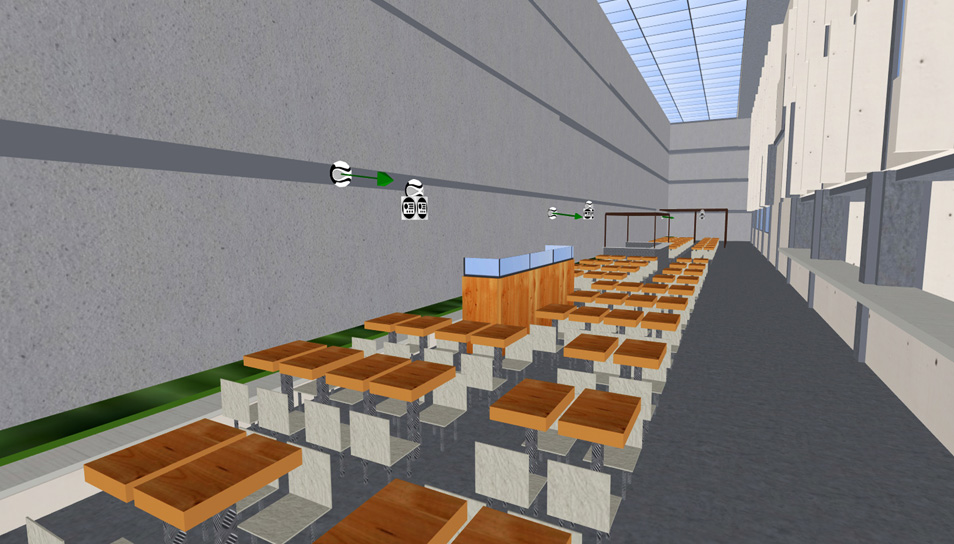
3D view of food court, as modelled in iBwave Design.

5G NR signal source is an 8×8 MIMO Remote Radio (RRU)
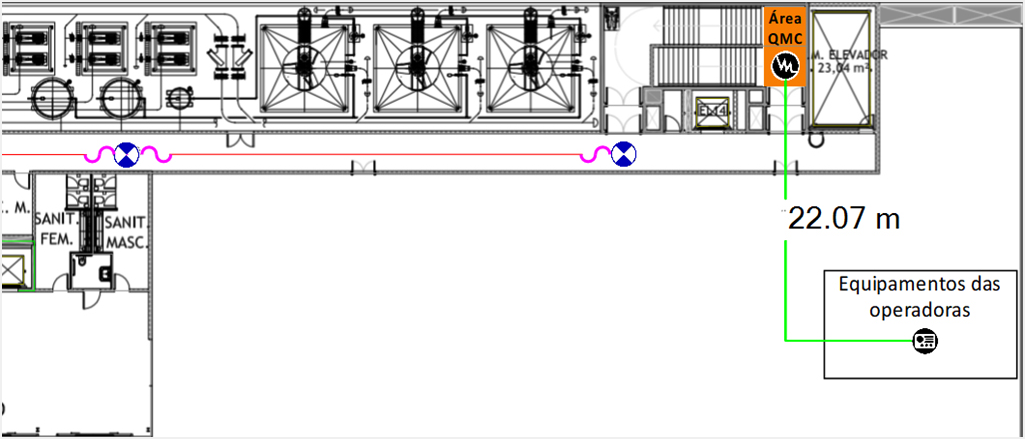
The RRU was located on the roof level, between the AC and elevators.
5G NR Data Analysis
5G NR RF survey data was taken using Samsung Galaxy Z Fold4 phone. The RF data was collected at food court with only one antenna transmitting. The data displayed below is SSS-RSRP:
Let’s take a look at 5G NR SSS-RSRP coverage map generated by iBwave Design, superimposed over SSS-RSRP survey data:
5G NR signal source is 8×8 MIMO, but 5G NR UEs only support 4×4 MIMO, so the receive signal at UE is 10*log10(4) = 6 dB higher than the gain of individual MIMO antenna array elements. If we assume that individual MIMO antenna array elements are omnidirectional antennas with gain in 0-2 dBi, then UE antenna gain is in the 6-8 dBi range. We could not find online reference for the exact antenna gain for Samsung Galaxy Z Fold4 phone. In the heatmap presented above UE antenna gain was set to be 8 dBi.
In the two figures above, we see that points far away from antenna, have very low SSS-RSRP values. In a typical design, SSS-RSRP coverage is designed to be -95 dBm or higher. SSS-RSRP signal 15 dB lower than the design target is not likely to affect other network KPIs (SINR, RSSI), so we decided to exclude the signal lower than -110 dBm from the analysis. The excluded data is shown in red squares:
The area where SS-RSRP survey data is greater than -110 dBm is shown below, superimposed over coverage prediction:
Prediction Accuracy Analysis
To find out how accurate our prediction was, we ran prediction vs measured data report. The report shows difference between the two as prediction error statistics. This is snapshot of the report:
| Prediction vs measured data summary Value (dB) | |
|---|---|
| Mean error (μ) | 1.85 |
| Absolute mean error (μ) | 4.52 |
| Standard deviation (σ) | 5.90 |
The prediction coverage can be refined using RF field data for calibration. We calibrated the propagation module, and the revised prediction map is shown below:
Prediction error statistics for calibrated prediction vs measured data is as follows:
| Prediction vs measured data summary Value (dB) | |
|---|---|
| Mean error (μ) | 2.82 |
| Absolute mean error (μ) | 3.69 |
| Standard deviation (σ) | 3.61 |
We see that calibration reduced absolute mean error less than 1 dB, but reduced standard deviation by more than 2 dB.
Conclusion
When analyzing the accuracy of 5G NR field data, it is important to remember the difference between taking data using RF scanner and using commercially available 5G NR phone. A scanner has a single omnidirectional antenna. A phone has 4×4 MIMO antenna array, and antenna arrays always add antenna array gain to gain of a single MIMO 4×4 antenna. The antenna gain factor for a 4-antenna MIMO array is 10*log10(4) = 6 dB. A single omnidirectional antenna gain is 0-2 dB. Thus, if 5G NR RF field data is collected using a 5G NR phone, and if the goal is to compare the field data with prediction data, UE antenna gain must be set to 6-8 dB in iBwave Design before running the prediction map.
It is also important to remember to exclude low SSS-RSRP data from the analysis. SSS-RSRP signal lower than -110 dBm is 15 dBm lower than the -95 dBm design threshold and does not affect other KPIs as SSS-RSRQ or RSSI. More importantly, using very low signal for calibration gives the same importance to both high and low signal, whereas it is more important to correctly predict signal that is above the threshold design range (> – 95 dBm) than to predict a very low signal (< – 110 dBm).
Finally, the prediction for 5G NR signal that propagates at 3.5 GHz is similar to prediction error we have seen at other frequencies [1], [2], where CW transmitter was used as source. From that perspective we can conclude that iBwave Design prediction accuracy is consistent regardless of the signal source or frequency band.
References
[1] iBwave: “Fast Ray Tracing”, white paper, published in 2013
[2] iBwave: “CW data analysis at 28 GHz”, blog entry, published in 2020
About iBwave
iBwave Solutions, the standard for converged indoor network planning, is the power behind great in-building wireless experience, enabling billions of end users and devices to connect inside a wide range of venues. As the global industry reference, our software solutions allow for smarter planning, design and deployment of any project regardless of size, complexity or technology. Along with innovative software, we are recognized for world class support in 100 countries, industry’s most comprehensive components database and a well established certification program. For more information visit: www.ibwave.com

